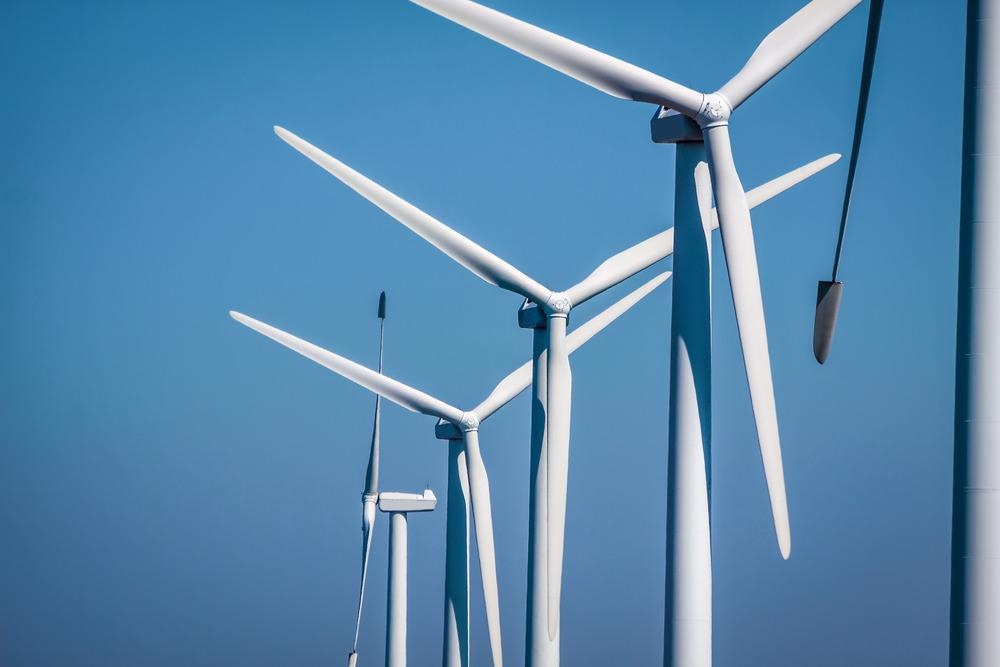 By Surbhi JainReviewed by Susha Cheriyedath, M.Sc.Mar 30 2022
By Surbhi JainReviewed by Susha Cheriyedath, M.Sc.Mar 30 2022In an article recently published in the journal Composite Structures, researchers discussed the structural reactions and design of a 38-meter sectional wind turbine blade placed under severe static loads.

Study: Design and structural responses of a 38-meter sectional wind turbine blade under extreme static loads. Image Credit: Bildagentur Zoonar GmbH/Shutterstock.com
Background
Due to their superior performance, fiber-reinforced polymer composites (FRPCs) have continued to see increased use in a variety of industries. The length of wind turbine (WT) blades has been steadily growing to capture more wind energy while lowering its cost. WT blades that are too long, however, might cause transportation issues because their length often surpasses the dimensions of road and traffic vehicles. Sectional blades with various segments were presented as a solution to these issues. Furthermore, connecting bolt strength, particularly fatigue strength, is a critical and challenging issue.
About the Study
In this study, the authors described the construction and design of a sectional blade with unique connections and a composite arrangement based on a 38-meter average commercial wind turbine blade. According to international standards, the prototype blade was tested under strong static loads.
The strains of the spar caps, sandwich structures, and shear webs were recorded, as well as the contact state of adjacent segments and bolt loads were illustrated. A suitable configuration of connection and an optimal laminate pattern surrounding the divided zone was proposed for the fabrication and design of a 38-meter-long sectional blade to analyze its overall and connection characteristics in order to increase the reliability of sectional blades.
The researchers performed a complete-scale extreme static test in four directions to meet the standards of commercial blades. The overall structural responses were investigated by looking at the deflections of loading points, structural stability, and material strength of several critical sections, and the contact statuses of bolted joints and bolt loads at the divided sections were determined to study the load-carrying characteristics under the condition of insufficient pre-load of multi-bolted joints.
The team presented a promising alternative approach in terms of connection design and composite layout for the preparation of commercial sectional blades. Sectional blades' overall dependability and cost efficiency were shown. The design and production of segmented blades with the proposed properties were discussed. The setup for the experiment as well as the test schedule was described. The experimental results of a full-scale sectional blade were examined in terms of material strength, blade deflections, the status and stresses of segmented connections, and structural stability.
Observations
Under 40%- and 100%-Min Flap loadings of the bolt strain, the analytic method (ϕ = 0.168 and ϕ = 0.194) agreed well with the experimental result. All of the strains had a tiny magnitude, less than 800 µε. The strain at the inner pressure side of the WT blade (PS) of the 15 m segment fluctuated erratically and showed substantial variance between the uploading and unloading operations, with a peak compressive strain of less than 200 µε.
More from AZoM: What Materials are Used to Make Wind Turbines?
The sectional and non-segmented blades had a mass of 6462 kg and 5850 kg, respectively. When compared to the non-segmented blade, the mass of the sectional blade was increased by 10.5%. The extra equipment consisted of positioning flanges and bolts that could be reused multiple times. The additional cost of the aforesaid equipment was empirically determined to be 2.0%. In comparison to the non-segmented 38-meter commercial blade, the sectional blade's overall production cost rise was 8.22%.
The sectional blade was found to withstand the extreme static stresses applied to commercial blades, and the blade's segmented connection endured more than 122% of the extreme static load without revealing any damage. The deflections of the sectional blade changed linearly with the loads applied in the loading and unloading procedures in all loading instances. After complete unloading, residual deflections were minor, and no overall stiffness deterioration was detected.
Conclusions
In conclusion, this study elucidated the design and fabrication of a sectional blade with a unique connection configuration and composite layout based on a typical 38-meter commercial blade as well as the experimental testing of the prototype blade under extreme static loads in accordance with international standards. When compared to equivalent non-segmented blades, the sectional blade successfully resisted the very static stresses with only a small manufacturing cost increase.
The authors emphasized that the proposed method could be used to design multi-bolted joints for sectional blades. They also believe that in order to minimize interface separation of segmented connections, the design of multi-bolted joints for segment connections needs to be improved and in order to further validate the reliability of sectional blades, more tests, particularly fatigue tests, must be conducted in future work.
Disclaimer: The views expressed here are those of the author expressed in their private capacity and do not necessarily represent the views of AZoM.com Limited T/A AZoNetwork the owner and operator of this website. This disclaimer forms part of the Terms and conditions of use of this website.
Source:
Zhiwen, Q., Shengguan, Q., Mingming, Z., et al. Design and structural responses of a 38-meter sectional wind turbine blade under extreme static loads. Composite Structures 115487 (2022). https://www.sciencedirect.com/science/article/abs/pii/S0263822322002781